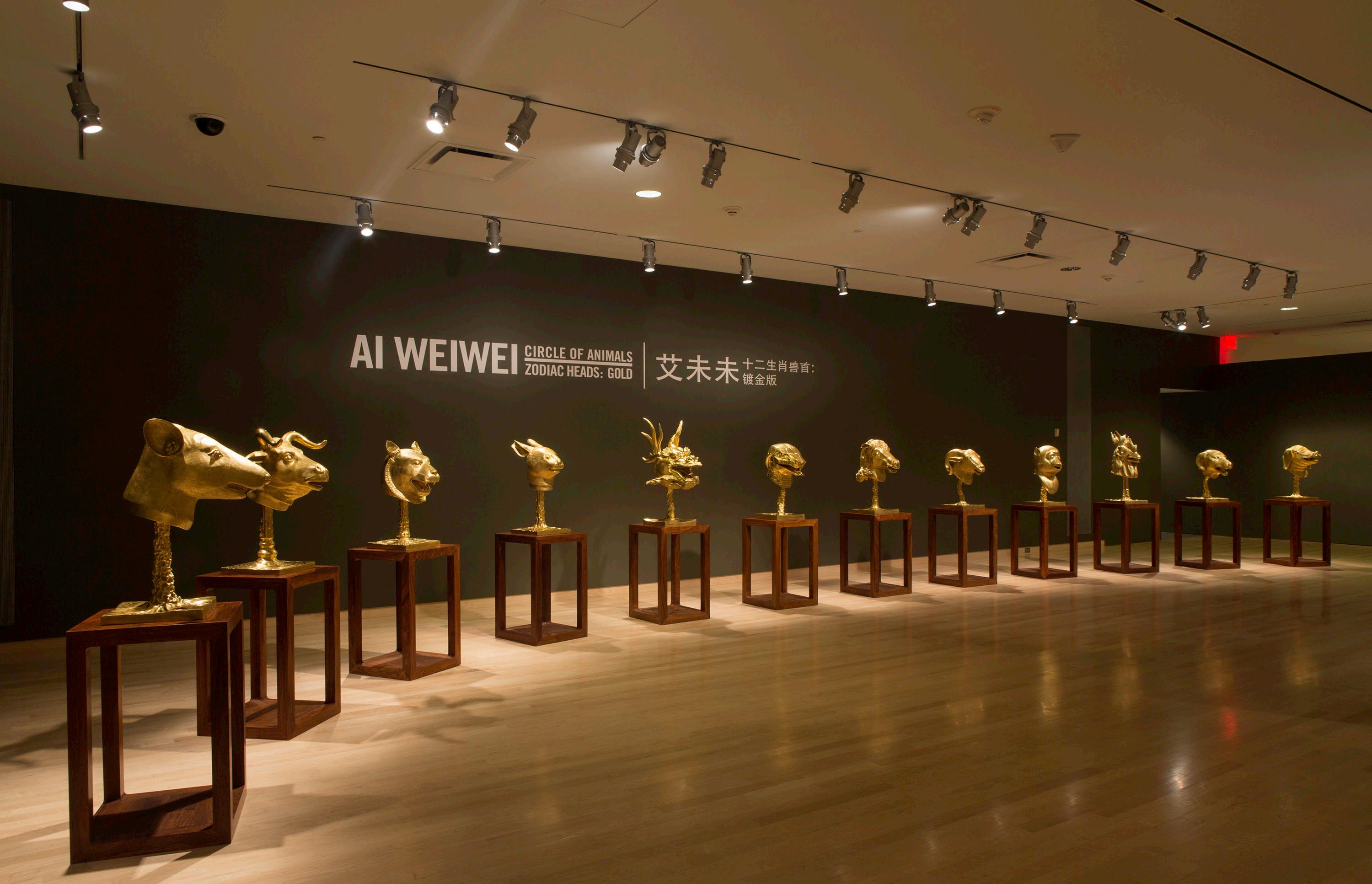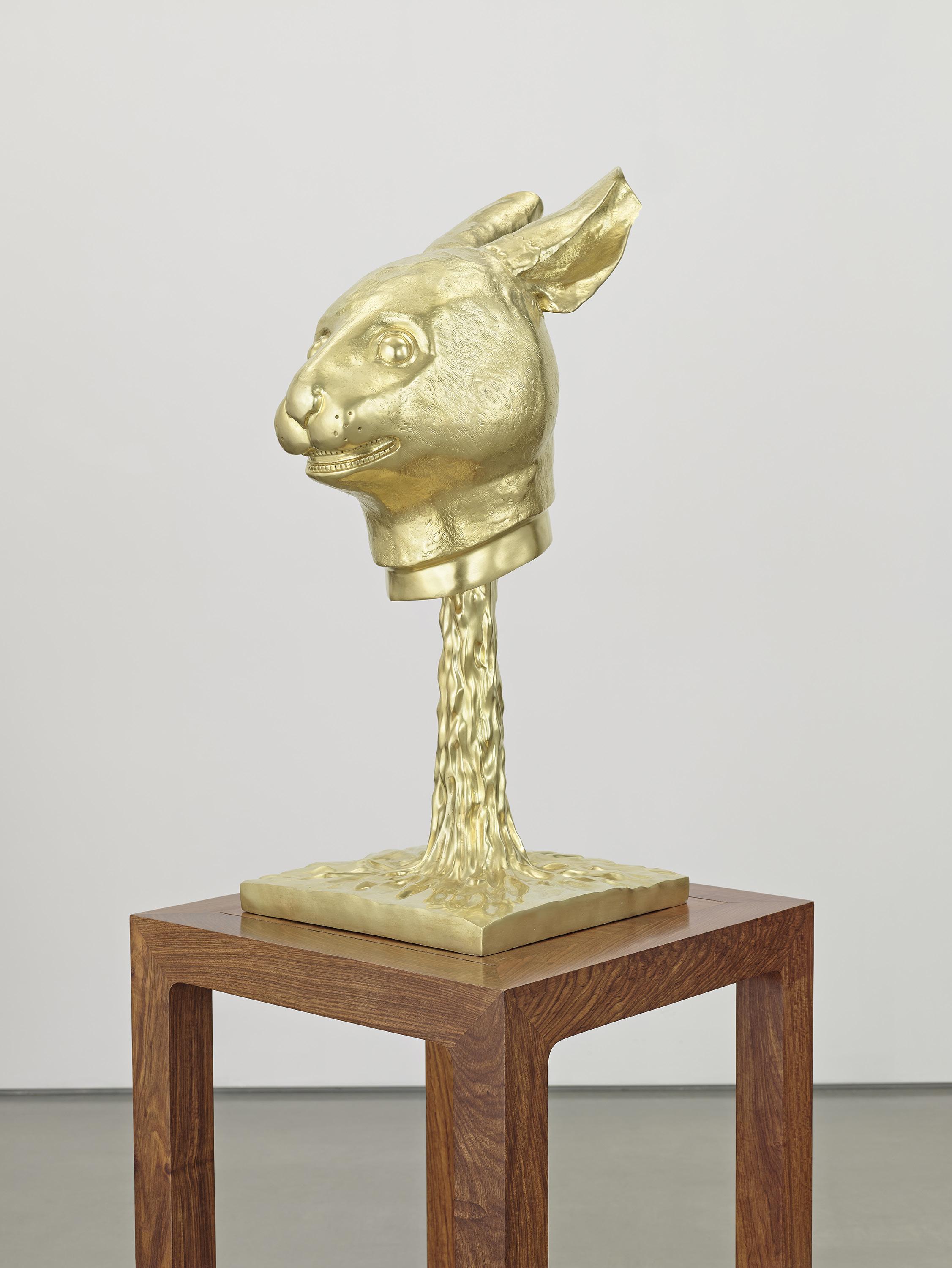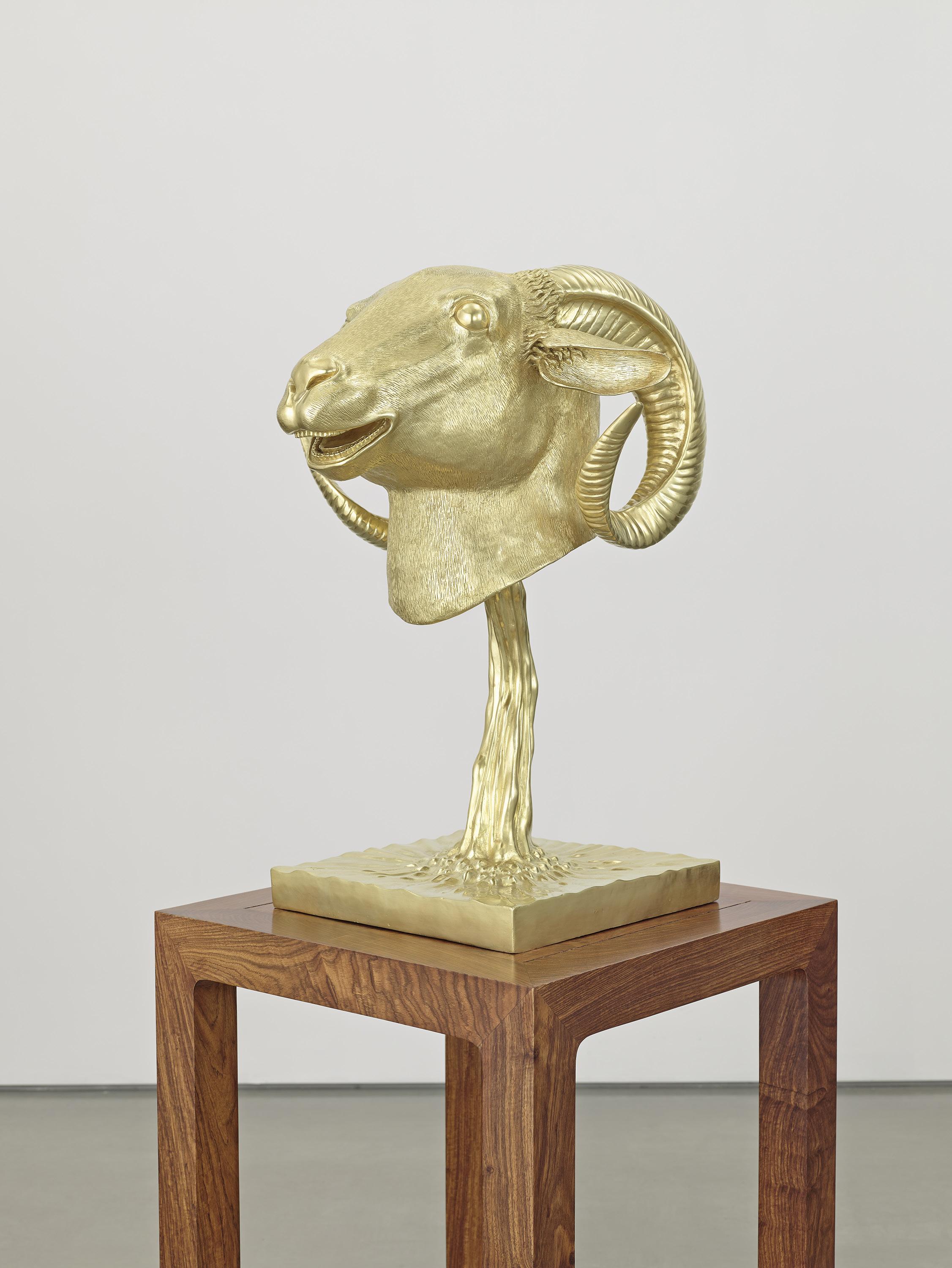
These twelve sculptures depict the animals associated with the traditional Chinese zodiac. Ai Weiwei’s cycle references a European rendering of the zodiac animals designed by the Italian Jesuit Giuseppe Castiglione. The original sculptures were built in the eighteenth century for an elaborate water-clock fountain at the Yuanmingyuan, a vast complex of gardens and pavilions on the outskirts of Beijing constructed under the reign of the Qing dynasty emperors.
In 1860 during the Second Opium War, the imperial gardens were ransacked, displacing the twelve zodiac heads. To this date only seven have been recovered. On one hand, the looted heads recall a low point in the country’s international profile, the beginning of China’s “century of national humiliation.” On the other hand, the spirit of nationalism and the value the objects represent in the art world have prompted calls for repatriation.
For Ai, the zodiac becomes fodder for the reinterpreting of cultural objects from his own historical knowledge and artistic liberty. Ai reworks all twelve creatures. For the missing dragon, serpent, ram, rooster, and dog, the artist makes stylistic references to the existing heads, even as he introduces influences from past dynasties, as well as scientific realism. As a conceptual artist, Ai’s trademark is itself affected by the work of the craftspeople who cast the bronze sculptures. In this way, the artist is able to “produce something that is a copy of an original, but not an exact copy—something that has its own sensitive layer of languages, which are different, and that bears the mark of our own time.”

Ai Weiwei’s zodiac sculptures are both inspired by and an ironic comment on a group of statues that were once part of a large palace and garden complex in Beijing, China—the Yuanmingyuan, or “Garden of Perfect Brightness”. Built over the course of several decades by the emperors of the Qing Dynasty (1644–1911), the Yuanmingyuan was a vast complex of pavilions, temples, lakes and gardens. At 860 acres in size, the Yuanmingyuan was the largest palace complex in the world.
Although the Qing emperors were not Chinese but Manchu—foreigners of nomadic origin from the northern steppes—once in power they quickly adopted Chinese cultural norms and political institutions. Capable administrators, they were also interested in Western science and technology and welcomed Jesuit scholars from Europe as advisors. In 1747, the Qianlong Emperor (reigned 1736–1795) invited two Jesuits, the Italian artist Giuseppe Castiglione and the French engineer Michel Benoist, to aid in the design and construction of a suite of European-style palaces and gardens at the Yuanmingyuan. The European palaces housed the imperial collection of Western objects that had come to China as diplomatic gifts—such as clocks, furniture, tapestries, and scientific instruments—as well as paintings and objects in Western style made by Chinese artists.
The most elaborate structure in the European section of the Yuanmingyuan was the Haiyantang, the Hall of Calm Seas. On the west façade at the base of a pair of grand, curving stairways, stood a large clam-shaped basin. It was flanked by marble platforms to the left and right, topped by bronze sculptures of the twelve zodiac animals. Each was portrayed with a human body and animal head, and each spouted water for two hours of the day. At noon, water gushed from the mouths of all twelve animals.
The unparalleled magnificence of the Yuanmingyuan came to an abrupt end in 1860, when British and French soldiers attacked the site as the culmination of the Second Opium War. Stone edifices were smashed, wooden pavilions were burned to the ground, and vast art collections—estimated at 1.5 million works—were looted or destroyed. Many of the most valuable objects eventually made their way to museums or private collections in Europe.
























Weiwei Circle of Animals/Zodiac Heads: Gold Rooster 2010
a gold patina



